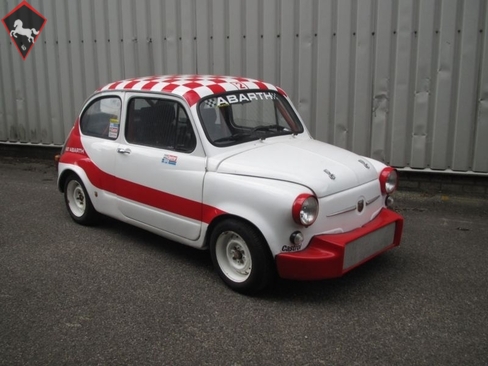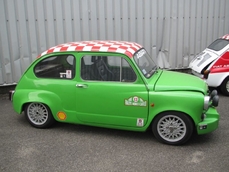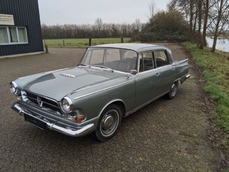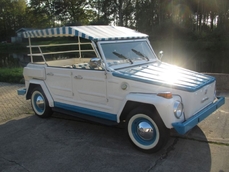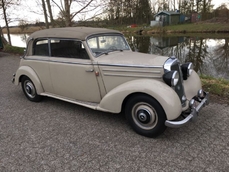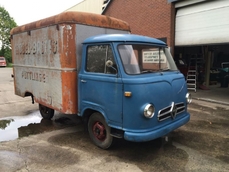Zastava 750 LE 1981
General description :
Informationen auf Deutsch
Weitere Informationen
Karosserieform: Steilheck (3-türig)
Türenzahl: 3
Zylinderzahl: 4Informatie in het Nederlands
Opmerkingen
De Zastava 750 LE is een leuke Abarth replica ,afkomstig uit het voormalige Joegoslavië,met snelle techniek
De Zastava 750 ( 750) is een automodel van de Joegoslavische automaker Zavodi Crvena Zastava. Hij bleef een van de best verkopende modellen van het merk voor 30 jaar in productie met 923.487 geproduceerde voertuigen. De bijnaam Fia is afgeleid van het hoofdkarakter uit een strip die in de eerste productiejaren van de auto is gepubliceerd in de krant Borba. In het kader van een samenwerkingsovereenkomst met Fiat S.p.A. Van Italië kreeg Zastava talrijke vergunningen voor het product van personenauto's en vrachtwagens van Fiat. De Fiat 600 werd in 1955 in Italië gebouwd en de zastava is een perfecte kopie van die auto.
-
Die Zastava 750 LE ist eine schöne Abarth Replik aus dem ehemaligen Jugoslawien mit schneller Technik.
Die Zastava 750 ( 750) ist ein Automodell des jugoslawischen Autoherstellers Zavodi Crvena Zastava. Er blieb eines der meistverkauften Modelle der Marke für 30 Jahre in der Produktion mit 923.487 produziert. Der Spitzname Fia stammt aus der Hauptfigur aus einem Comic-Strip, der in der Zeitung Borba während der ersten Produktionsjahre des Autos veröffentlicht wurde. Im Rahmen einer Kooperationsvereinbarung mit Fiat S.p.A. Von Italien erhielt Zastava zahlreiche Lizenzen für das Produkt von Fiat Pkw und LKW. Der Fiat 600 wurde 1955 in Italien gebaut und die Zastava ist eine perfekte Kopie des Autos.
The Zastava 750 LE is a nice Abarth replica, from the former Yugoslavia, with fast technology
The Zastava 750 ( 750) is a car model of the Yugoslav automaker Zavodi Crvena Zastava. He remained one of the best-selling models of the brand for 30 years in production with 923,487 produced. The nickname Fia is derived from the main character from a comic strip published in the newspaper Borba during the first production years of the car. In the context of a cooperation agreement with Fiat S.p.A. From Italy obtained Zastava numerous licenses for the product of Fiat passenger cars and trucks. The Fiat 600 was built in Italy in 1955 and the zastava is a perfect copy of that car.
Meer informatie
Carrosserievorm: Hatchback (3-drs)
Aantal deuren: 3
Aantal cilinders: 4
BTW/marge: BTW niet verrekenbaar (margeregeling)
Bedrijfsinformatie
Zaterdags geopend van 09-13 uur, de rest van de week op afspraak.
Samstag 9-13 uhr geöffent rest der woche auf termin. Wir können auf Wunsch für Ihr Fahrzeuge den TÜV absolvieren, und ein H.gutachten erstellen.Wir sind 7km von die Deutsche grenze. Besichtigung nur nach Terminvereinbarung!
We are open on Saturday 9-13 hour, rest of the week on appointment...
1981 Zastava 750 LE is listed for sale on ClassicDigest in Ettensestraat 19NL-7061 AA Terborg by POTOMAC CLASSICS B.V. for €9500.
Car Facts
Car type : Car Make : Zastava Model : 750 Model Version : LE Engine size : 0.0 Model Year : 1981 Sub type : Sedan Location : Ettensestraat 19NL-7061 AA Terborg Vehicle Registration : Undefined
9500 €
People who viewed this Zastava 750 also viewed similar Zastava listed at ClassicDigest
Other cars listed for sale by this dealer
About Zastava
Tito's revengeZastava Automobiles was a Serbian automotive manufacturer that had a long and complex history, primarily known for its association with Fiat. The company originally started in 1853 as a firearms manufacturer and expanded into automobile production in the mid-20th century. Zastava was Yugoslavia's primary car manufacturer.
Partnership with Fiat:
Fiat License: Zastava's most significant period was marked by its partnership with Fiat. The company acquired licenses from Fiat to produce vehicles based on Fiat models.
Fiat Models Production: Zastava produced a range of vehicles under Fiat licenses, including the Zastava 750, a version of the Fiat 600, which became one of their most iconic models.
Quality and Comparison with Fiat:
Quality Concerns: Zastava's cars, though based on Fiat designs, were often considered to have inferior build quality compared to the original Italian Fiats. Quality control issues, materials, and manufacturing processes sometimes led to concerns regarding reliability and overall build quality.
Economic Factors: Zastava faced challenges due to economic conditions, lack of modernization, and constraints in production methods, which often impacted the quality of the vehicles they manufactured.
Evolution and Changes:
Political Changes: Zastava, like many industries in the region, faced significant challenges due to political instability, economic sanctions, and the breakup of Yugoslavia in the 1990s.
End of Production: The company continued operations for some time after the Yugoslav Wars but ceased automobile production in the early 21st century.
Legacy:
Cultural Impact: Despite quality concerns, Zastava cars had a significant impact in Yugoslavia and Eastern Europe. Models like the Zastava 750, based on the Fiat 600, were popular due to affordability and practicality.
Historical Significance: Zastava's history, though complex, is an integral part of the automotive industry in the former Yugoslavia and stands as a reminder of the region's industrial heritage.
In terms of quality compared to original Italian Fiats, Zastava cars were generally considered to be of lower quality, often due to differences in manufacturing standards, materials, and quality control processes. While they were based on Fiat designs, the execution and production methods sometimes led to perceived disparities in overall build quality and reliability.
